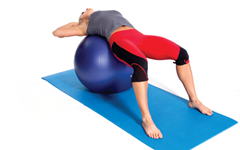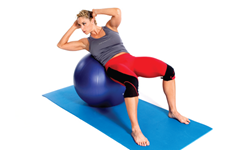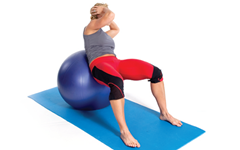Anxiety disorders affect one in eight children. It has become an increasing problem for kids, parents and teachers.
While many children look forward to school, some children dread it. Anxious kids endure painful, uncomfortable episodes of nervousness, irritability and frightening thoughts. They often
find it difficult to focus on their school work and may frequently complain of illness, such as headaches or stomachaches.
Untreated anxious kids are at higher risk of engaging in substance
abuse.

Normal Anxiety vs. Anxiety Disorder
It is typical for even non-anxious children to experience anxious feelings, such as being afraid of the dark or getting separated from their parents.
Children attach anxiety to specific situations, but the bad feelings
disappear when the situation is over, or the child simply outgrows the fear. However, children with anxiety disorders
endure extreme anxiety over long periods of time.
What causes a child to develop an anxiety disorder? The answer is still not clear, but numerous experts agree that genetics, family environment and life experiences all play key roles.
Studies indicate girls are more likely to develop anxiety disorders than boys, and younger children are more prone to anxiety problems than older children.
Separation Anxiety
![clip_image002_thumb[1] (2)](https://prioritylifechiro.com/wp-content/uploads/2015/12/clip_image002_thumb1-2.gif)
This is a common issue for young kids, especially if they are just starting school or changing to a different school. A child may cry for a few minutes after being dropped off at school. This is a normal response, but for a child with separation anxiety disorder, he or she can feel fearful for hours and cry continually. The child
may have concentration difficulties and fail to engage with his or her classmates.
The problem can continue at home, with the anxious child having sleep problems, frequent nightmares or refusing to go to school.
Social Anxiety
This anxiety disorder can interfere with a child’s social development. To parents, social anxiety can appear as extreme shyness in their child. Kids with this disorder feel anxious around
new people and new situations, may have trouble forming friends and are often reluctant to participate in group activities. At school, a socially anxious child is afraid to make mistakes for fear of embarrassment or attracting unwanted attention.
School Refusal Anxiety
Severe anxiety can lead to a child refusing to go to school or stay in school. With school refusal anxiety disorder, a child often complains of feeling ill – either at school or shortly before going to school. He or she may develop this problem if changing to a new school, fears failing academically, or gets bullied.
School refusal can be linked to
separation anxiety and social anxiety.
Treatment of Anxiety
The primary treatment method used for dealing with childhood anxiety is cognitive behavioral therapy (CBT).
This type of psychotherapy is based on the idea that our thoughts cause our feelings and behaviors, not external things – such as events, situations and people.
The CBT therapist teaches the child to recognize their unsettling thoughts and behaviors and provides strategies to deal and cope with his or her anxious feelings. CBT therapy also includes relaxation training, role-playing and positive reinforcement.
More Tips for Parents of Anxious Kids
If you think your child is struggling with serious anxiety, talk to a
pediatrician. You should also bring it to the attention of your child’s teacher and school counselor.
In the meantime, here are five tips for
helping your anxious child:
1. Be Supportive – Make your child feel comfortable talking about her anxiety and offer reassurance. When a child is able to express fears to her parents, she actually experiences a decrease in anxiety.
2. Be School Positive – Point to the fun aspects of school to your child. This can include playing with classmates and engaging in new activities.
3. Allow for Downtime – Just like adults, children need time to decompress. Do not over schedule your child with too many activities. Make sure they have unstructured playtime, which helps reduce the impact of anxiety.
4. Encourage Exercise – Children should get 60 minutes of physical activity daily. Exercise helps slash levels of the stress hormone cortisol and boost levels of the mood enhancing neurotransmitters dopamine and serotonin. Studies show children involved in team sports report less anxiety, and it is especially helpful for kids with social anxiety disorder.
5. Visit Your Chiropractor – Getting regular chiropractic adjustments help kids just as much as adults. Chiropractic reduces stress-related subluxations that impact nerves and restores a more balanced, natural tone to the nervous system.
Disclaimer: Information contained in this Wellness Express™ newsletter is for educational and general purposes only and is designed to assist you in making informed decisions about your health. Any information contained herein is not intended to substitute advice from your physician or other healthcare professional.
Copyright © Wellness Express™





![clip_image002_thumb[1] (2)](https://prioritylifechiro.com/wp-content/uploads/2015/12/clip_image002_thumb1-2.gif)
![clip_image002[4]_thumb (1)](https://prioritylifechiro.com/wp-content/uploads/2015/12/clip_image0024_thumb-1.gif)

![image_thumb[1] (25)](https://prioritylifechiro.com/wp-content/uploads/2015/12/image_thumb1-25.png)
![image_thumb[3] (10)](https://prioritylifechiro.com/wp-content/uploads/2015/12/image_thumb3-10.png)
![image_thumb[5] (6)](https://prioritylifechiro.com/wp-content/uploads/2015/12/image_thumb5-6.png)
 Just say NO to High Fructose Corn Syrup!
Just say NO to High Fructose Corn Syrup! Converting to a NO High Fructose Corn Syrup home isn’t as hard as you expect, and is necessary for good health.
Converting to a NO High Fructose Corn Syrup home isn’t as hard as you expect, and is necessary for good health.



![image_thumb[1] (26)](https://prioritylifechiro.com/wp-content/uploads/2015/12/image_thumb1-26.png)




